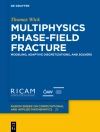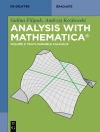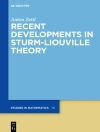Whether you are looking for an introduction to the field of tree balance, a reference work on the multitude of available balance indices or inspiration for your future research, this book offers all three. It delves into the significance of tree balance in phylogenetics and other research domains, where numerous indices have been introduced over the years. While the variations in definitions and underlying principles among these indices have long remained a challenge, this survey addresses the problem by presenting formal definitions of balance and imbalance indices and establishing desirable properties.
The book is comprehensive both in the inclusion of a variety of indices and in the information provided on them: the authors meticulously analyze and categorize established indices, shedding light on their general, statistical and combinatorial properties. They reveal that, while some known balance indices fail to meet the most basic criteria, certain tree shape statistics from other contexts prove to be effective balance measures. The collected properties are neatly presented, numerous new results are established, open research questions are highlighted, and possible applications are discussed.
Reviewing over twenty (im)balance indices, a wealth of mathematical insights is provided, accompanied by real-world examples showcasing the importance of tree balance in diverse research areas. Catering to researchers, students, mathematicians, and biologists, the book can be used as a textbook for university seminars, a reference on tree balance, and as a source of inspiration for future research. It is accompanied by the free R package ‘treebalance’, a powerful tool to further explore and apply the discussed concepts, and a website allowing quick access to the main information and the latest developments in the field.
Table of Content
Part I: Introduction.- 1 Opening Remarks.- 2 Preliminaries.- 3 A brief sketch on the relevance and history of tree balance.- 4 Concepts of tree balance and imbalance.- Part II: Tree balance and imbalance indices.- 5 Sackin index.- 6 Average leaf depth.- 7 Variance of leaf depths.- 8 Total cophenetic index.- 9
s-shape statistic.- 10
B1 index.- 11
B2 index.- 12 Colless index.- 13 Corrected Colless index.- 14 Equal weights Colless index /
I2 index.- 15 Quadratic Colless index.- 16 Colless-like indices.- 17
I-based indices.- 18 Symmetry nodes index.- 19 Rogers
J index.- 20 Rooted quartet index.- 21 Colijn-Plazzotta rank.- 22 Furnas rank.- 23 Less established tree shape statistics that are (im)balance indices.- 24 Related tree shape statistics that are not (im)balance indices.- 25 Extended and alternative measures of tree balance.- Part III: Applications and outlook.- 26 Software.- 27 Applications.- 28 Discussion and outlook.- Appendix A: Lookup Tables.
About the author
Mareike Fischer is a professor of Biomathematics and Stochastics at the University of Greifswald (Germany). She obtained her Master’s degree in Mathematics at the Technical University of Kaiserslautern (Germany) in 2005 and her Ph D in Biomathematics at the University of Canterbury (New Zealand) in 2009. Her research mainly focusses on mathematical phylogenetics. This includes analyzing properties of evolutionary trees and networks as well as developing reconstruction methods for such structures.
Lina Herbst obtained her Ph D in Biomathematics at the University of Greifswald (Germany) in 2019. She became a postdoc at the Max Planck Institute for the Science of Human History (Jena, Germany). Now she holds a Walter Benjamin fellowship funded by the German Research Foundation and hosted at the Friedrich Schiller University Jena. Her research interests include phylogenetics and phylolinguistics, in particular developing phylogenetic tools to address questionsin the field of language evolution.
Sophie J. Kersting obtained her Master’s degree in Biomathematics from the University of Greifswald (Germany) in 2020. She currently works as a researcher at the Institute of Mathematics and Computer Science in Greifswald and is pursuing a Ph D at the intersection of mathematical phylogenetics and 3D plant architecture.
A. Luise Kühn obtained a Master of Science in Biomathematics from the University of Greifswald (Germany) in 2018. After that, she was a researcher at the Institute of Mathematics and Computer Science in Greifswald working on balance concepts in phylogenetics and plant ecology. Currently, she is a statistician in the Department of Psychiatry and Psychotherapy of the University Medicine Greifswald analyzing population health data. In her work she uses mathematics to gain biological insights.
Kristina Wicke obtained her Ph D in Biomathematics from the University of Greifswald (Germany) in 2020. She then spent two years as a President’s Postdoctoral Scholar at The Ohio State University (USA) and is currently an Assistant Professor in the Department of Mathematical Sciences at New Jersey Institute of Technology (USA). Her research focus lies in mathematical phylogenetics, in particular in phylogenetic diversity indices and structural properties of phylogenetic trees and networks.












